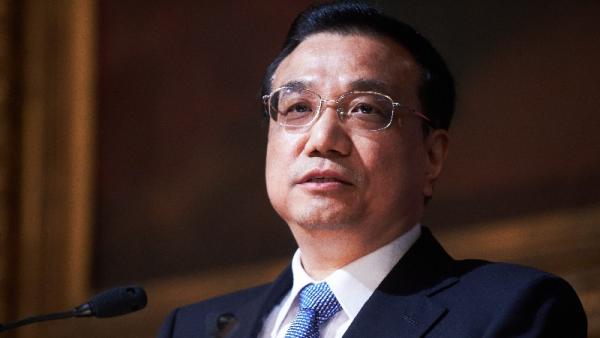Friends of Europe / Flickr

James Laurenceson, Deputy Director, Australia-China Relations Institute, University of Technology Sydney |
This article appeared in The Australian Financial Review, March 22 2017.
When Chinese Premier Li Keqiang arrives in Australia on Wednesday night, he and Prime Minister Malcolm Turnbull will celebrate an economic relationship that is deeper and broader than ever before.
Not only is China Australia’s biggest overseas market for agricultural goods and services, it’s been our fastest growing too. And despite predictions of ruin several years ago, China continues to buy record volumes of our mining and energy output as well.
The outlook is also bright, underpinned by the China-Australia Free Trade Agreement and what the OECD expects will be 850 million more middle class Chinese by 2030.
Yet if Premier Li’s visit is to be more than just a mutual back slapping exercise, Prime Minister Turnbull might like to press his guest on areas where Chinese policies continue to hold the relationship back.
Mixed progress
Last week, Kim Beazley and Ian Satchwell of the Perth USAsia Centre rightly noted that while China may be Australia’s biggest trading partner, the US is by far our most important investment partner.
The US hosts 29 percent of Australia’s stock of foreign investment aboard. The Chinese share is just 3 percent.
This cannot simply be blamed on risk-averse and shortsighted Australian companies.
Despite long talking about opening its services sector to foreign participation, the facts on the ground show mixed progress.
To cite just one example: 16 years after China’s entry into the World Trade Organisation (WTO), foreign banks are still prohibited from owning more than a 20 percent stake in a Chinese lender.
This year ANZ sold its minority stake in Shanghai Rural Commercial Bank, which it had bought back in 2007. Stringent capital requirements for minority shareholders and a lack of progress on ownership restrictions were among the reasons.
China’s dismal FDI regime
The OECD ranks 58 countries according to the severity of restrictions they place on foreign investment in the services sector. China comes in at a dismal 56th.
The services sector has also expanded to become the biggest part of China’s economy, accounting for 52 percent of GDP last year. In other words, foreign companies are effectively being confined to operating in a shrinking portion of the pie.
In the latest Business Climate Survey by the American Chamber of Commerce in China, released in January, four in five members reported they felt foreign businesses were less welcome than before.
Last year a survey by the European Chamber of Commerce found that only 47 percent of businesses surveyed planned on expanding their operations, down from 86 percent in 2013.
China’s leaders may continue to talk up the benefits of free trade and investment, in a stark and welcome contrast to President Donald Trump’s anti-globalisation rhetoric in the US. But Australian companies won’t be fooled into committing more capital to China until official statements are backed by concrete reforms.
FIRB isn’t to blame
Beijing also needs to liberalise investment in the opposite direction. While China has accounted for more than 20 percent of Australia’s trade since 2011, it still only accounts for two percent of the stock of foreign investment.
To point the finger at Australia’s foreign investment approvals regime would be misguided.
True, measures such as the mandatory screening of investment proposals by Chinese government-owned companies and low thresholds for Chinese privately-owned firms wanting to invest in Australia’s agricultural sector struggle for an economic justification and add to costs.
But in the end, the overwhelming majority of these investments are given the green light. This suggests the greater barrier lies at the Chinese end.
While US citizens are free to buy whatever shares they like in companies listed on the Australian Stock Exchange, Chinese individuals are limited by a $US50,000 annual foreign exchange quota that hasn’t been raised since 2007.
Turnbull needs to get answers
Prime Minister Turnbull might also like to seek clarification on behalf of Australian companies for an apparent ugly turn in China’s foreign policy over the past month.
In response to the Republic of Korea’s decision to deploy the US-supplied THAAD missile defence system, the country has fallen victim to various Chinese retaliatory measures.
In one example, Korean authorities said that the China National Tourism Administration had given verbal orders to Chinese tour operators to stop offering group tours. Last year a record eight million Chinese visited Korea.
To be sure, China has every right to lodge strong diplomatic protests. And the Chinese public are also free to stop buying Korean cars or watching Korean dramas.
But unofficially sanctioning measures that hurt Korean companies and using state-controlled media to fuel anti-Korean sentiment cuts against the spirit of the rules that underpin global trade, even if they are subtle enough not to see China hauled before a WTO dispute panel.
Some Australian companies would right now be wondering whether they too might get caught in the crossfire if the Australian government took a sovereign decision it believed to be in the national interest, but which nonetheless upset China. The rational response of these companies would be to limit their exposure. And both Australia and China would be worse off as a result.
Author
Professor James Laurenceson is Deputy Director of the Australia-China Relations Institute at the University of Technology Sydney.


